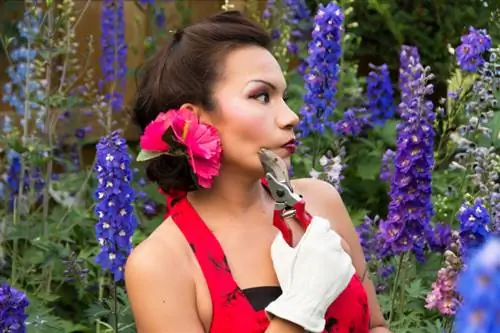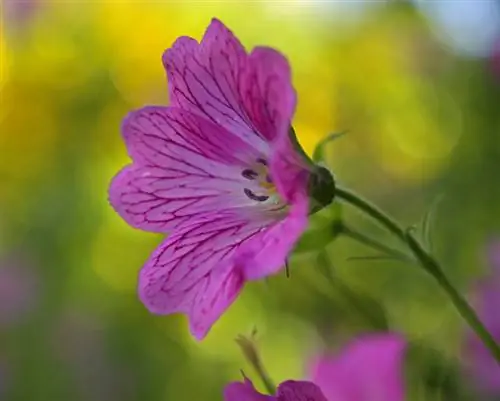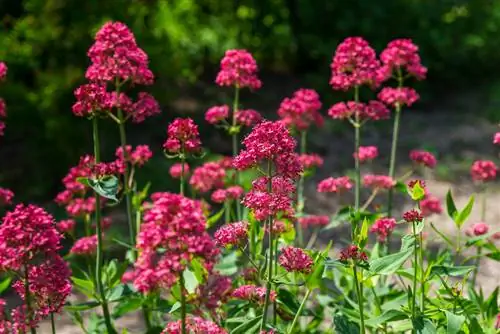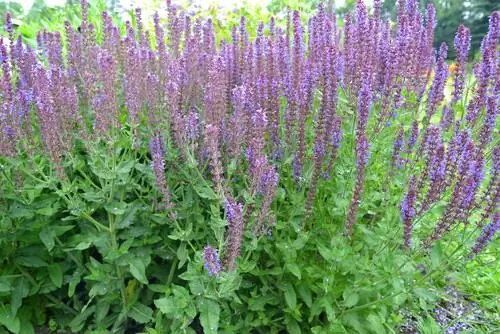- Author admin [email protected].
- Public 2023-12-16 16:46.
- Last modified 2025-01-23 11:22.
The delphinium, which usually blooms in strong shades of blue, purple or white and can be seen magnificently from afar, is a very popular plant. Delphinium, as gardeners also call the delphinium, actually blooms in the summer months and then produces numerous seeds in its follicles. However, through targeted pruning, the plant can be stimulated to bloom a second time in autumn.

How do I cut the delphinium correctly?
To prune the delphinium correctly, remove spent flower spikes 20-30 cm above the ground in summer. Optionally, carry out autumn pruning by cutting the plant back just above the ground. If there are any signs of illness, immediately remove affected parts of the plant.
Prune larkspur after summer flowering
For beautiful autumn blossoms, you should immediately cut back the spent flower spikes of the delphinium in summer. However, you must not cut too deeply, otherwise the plant will no longer sprout. The guideline is usually a cut above the leaves at a height of 20 to 30 centimeters above the ground. Use a clean and sharp knife or secateurs to cut.
Collecting seeds
If you do not carry out this cut, the plant will develop up to three narrow follicles per flower, from which you can then extract the seeds in autumn. This procedure is recommended if you are dealing with delphiniums that are only one to two years old (which usually do not bloom a second time) or if you want to propagate perennial specimens.
Performing an autumn pruning
If you have carried out the summer pruning and the delphinium shows its flowers in autumn, wait until the late flowers have faded before the last autumn pruning. Depending on when the second flowering occurred, this may not be the case until November. Cut the delphinium back to just above the ground in autumn; the plant will retreat into its rhizomes to overwinter anyway. The above-ground parts of the plant die and only provide an entry point for unwanted pathogens.
What to do if the leaves are discolored?
If there are certain signs of illness, you should act immediately and cut back and dispose of affected parts of the plant immediately. This is the case if
- the leaves turn black
- the leaves are covered with brown to black dots
- Leaves and shoots appear to be covered with a white coating.
In all cases, delphinium is infected with highly contagious fungal and bacterial diseases that must be contained immediately. Otherwise there is a risk of further infections, including from neighboring plants. Please never put infected plant parts in the compost; instead, dispose of them with household waste.
Tips & Tricks
Pruning measures should be carried out on all plants on overcast, mild days if possible. This measure prevents dehydration and also ensures that patients are less stressed.






